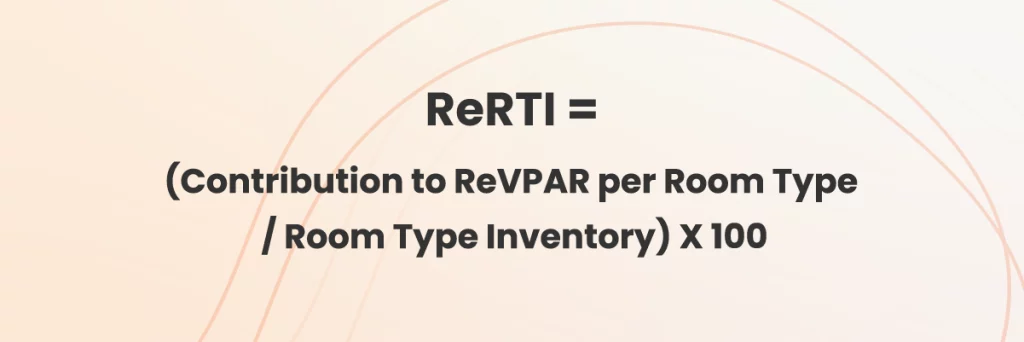Hospitality KPI Dictionary

Key performance indicators (KPIs) serve as a powerful tool for measuring performance and guiding data-driven decisions. For hoteliers, KPIs span various functions, from financial health to customer service and operational efficiency. Choosing the right KPIs—such as average daily rate (ADR), occupancy rate, and revenue per available room (RevPAR)—is crucial in obtaining clear insights that drive revenue and improve guest experiences.
What does the key performance indicator (KPI) mean?
A key performance indicator (KPI) is a measurable value that shows how effectively a business, team, or individual is achieving a specific goal or objective. KPIs help organizations track progress toward critical targets, make data-driven decisions, and identify areas needing improvement.
KPIs encompass various areas, including financial management, operations, and departments like marketing and front-of-house. Selecting the right KPIs relevant to each specific area is crucial for obtaining accurate data and metrics that can help enhance performance and drive success.
Why are KPIs important?
- Performance measurement
- Informed decision-making
- Goal alignment
- Accountability
- Continuous improvement
The most important hotel KPIs you need to know
Average daily rate (ADR)
The average daily rate (ADR) indicates the average revenue earned per sold room per day. ADR focuses on pricing by showing the average room rate paid by guests over a specific period, excluding rooms that were not sold out.
To calculate ADR:
ADR = Total Room Revenue / Total Rooms Sold
ADR provides insight into how much revenue a hotel earns per sold room, which directly reflects pricing effectiveness. By monitoring ADR, hoteliers can assess how well they are capturing demand at different price points, allowing them to adjust rates to optimize revenue based on demand patterns, seasonality, and competitive positioning.

Occupancy rate
The occupancy rate is a crucial performance indicator in the hospitality industry.
To calculate the occupancy rate:
Occupancy Rate = (Total Occupied Rooms / Total Available Rooms) X 100
A higher occupancy rate often leads to increased revenue, making it crucial for hoteliers to track trends and adjust pricing strategies accordingly.

Revenue per available room (RevPAR)
RevPAR combines two important performance factors: occupancy rate and average daily rate (ADR). It gives a fuller picture of a hotel’s revenue performance than simply looking at the occupancy rate or average daily rate (ADR) alone.
To calculate RevPAR:
RevPAR = Average Daily Rate (ADR) × Occupancy Rate
Unlike metrics that focus solely on occupancy or pricing, RevPAR helps hoteliers gauge the effectiveness of their pricing strategies and capacity to generate revenue. It’s a key indicator for benchmarking against competitors and assessing profitability, making it central to revenue management and decision-making in the hospitality industry.

Average length of stay (ALOS)
ALOS measures the average number of nights guests stay at a hotel or accommodation. It helps hoteliers optimize occupancy and improve guest experience by better aligning with guest preferences and stay patterns.
To calculate ALOS:
ALOS = Total Occupied Room Nights / Total Number of Bookings
A longer ALOS typically reduces the frequency of check-ins and check-outs, lowering operational costs and enhancing efficiency. It also provides insight into guest behavior, helping hoteliers design targeted promotions to encourage longer stays and increase overall revenue stability.

RevPAR Room Type Index (ReRTI)
ReRTI is a metric that shows how well each room type performs in revenue compared to the hotel’s average revenue per room. It helps hoteliers see which room types bring in more or less revenue, giving a clearer picture of each room type’s contribution to overall income.
To calculate ReRTI:
ReRTI = Contribution to ReVPAR per Room Type / Room Type Inventory X 100
This metric ultimately aids in maximizing revenue by ensuring that each room type is contributing as effectively as possible to the property’s income.

Market penetration index (MPI)
MPI measures how well a hotel is capturing its share of the available market based on occupancy or revenue compared to its competitors. It is a valuable tool for revenue managers and hotel owners to assess their market positioning and optimize strategies for capturing more guests.
To calculate MPI:
MPI = (Hotel’s Occupancy Rate / Market Occupancy Rate) X 100

Conclusion
Unlock the power of data-driven decision-making and transform your hospitality business with the right KPIs. Leverage these success metrics, and take confident steps toward optimizing every aspect of your business.



